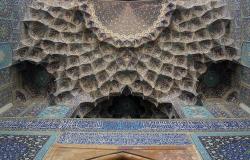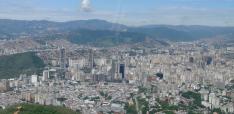From “Persian Spring” to “Autumn leaves falling”? Iran between Protests, Sanctions and Possible Military Strikes

Cornelius Adebahr explores the prospects of a 'Persian spring' and what role outsiders may play.
When people in Iran took to the streets earlier this year, some commentators were quick to identify a coming “Persian spring”. This has not happened so far, even though the domestic situation remains tense, with the government being under pressure due to a widespread economic malaise. Moreover, US sanctions on Iranian oil exports coming in early November are aimed at (finally) bringing the regime to its knees. As leaves start to fall even in Tehran, is the Islamic Republic about to fade just before the 40th anniversary of the 1979 Revolution?
Let’s start with the situation in the country. Signs of decay are clearly visible, even though the ongoing protests – workers’ strikes continue to this day – have so far failed to become a coherent movement. That’s because the economy remains in bad shape, despite a brief period of openness following the 2015 nuclear agreement. Now, Washington’s withdrawal from the deal, despite Iranian compliance and vociferous protests from America’s European allies, and the ensuing re-imposition of sanctions create additional market pressures.
In fact, international sanctions are only part of the country’s economic problems. Rather, much of these are home-grown: mismanagement and corruption have plagued people for decades; unemployment is persistently high among the many young university graduates as well as in rural areas; and a government-maintained system of differential exchange rates, turning large importers into currency speculators, has greatly contributed to the rapid decline in the value of the local currency Rial, which in turn has brought price increases to the general population. Add to this recurring demonstrations against deteriorating environmental conditions and, of course, regular protests in favor of women’s rights, and the ingredients for a very volatile cocktail of social conditions are there.
Yet what remains unknown is the willingness of the revolutionary elites around Supreme Leader Ali Khamenei to hang on. Yes, it is an encrusted clique of ‘old men’ which has governed the country for four decades, but also one that knows how to defend itself with violence. Whenever there was an opportunity for internal change in the past – be it under the ‘reform president’ Mohammed Khatami in the late 1990s or with the Green Movement of 2009 – instead, the regime fiercely struck back. Even the current President Hassan Rouhani who came into office in 2013 on a platform of moderation has disappointed his voters. Now, facing massive pressure from the United States and its regional allies, he is turning towards the hardliners to secure the survival of the Islamic Republic.
This is where developments in the Middle East come into play. Despite its domestic instability, Iran sees its hand in the region strengthened, which in turn worries other powers. Its support for Syrian President Bashar al-Assad in particular has made Tehran – alongside Russia and Turkey – a guarantor for regional ‘stability’. However, the relative success in Syria and its barely-enough backing for the Houthi rebels in Yemen have also put it in direct military confrontation with Israel and its Saudi Gulf rivals, Saudi Arabia and the United Arab Emirates. The Israeli Air Force now flies almost daily attacks against positions of Shiite militias close to the Israeli-Syrian border, just as Riyadh and Abu Dhabi continue their disastrous campaign in Yemen including by pointing to Iranian support for the rebels.
This precarious situation in the Levant as well as around the Persian Gulf can quickly lead to a regional military escalation. Even the more hawkish elements of the U.S. foreign policy establishment are now worried that the Washington could be drawn into another war – be it through the dynamics created by the coming oil embargo, through provocations of its local allies, or through deliberate manipulation by its own neocons. Pundits point to the parallels with the illegal invasion of Iraq in 2003 and the subsequent collapse of the state, with which the United States laid the foundation for the rise of the Islamic State and Iran’s increasing influence over its majority Shiite neighbor.
Trying the ‘2003 trick’ on Iran would have dire consequences, besides being wholly unjustified (then as now): It could either lead to the Iranian Revolutionary Guards seizing the power in an effort to save the Islamic Republic, creating a military dictatorship on the way, or to the country sinking into chaos, much like what happened in after the invasion of Bagdad (except that it would be worse, with 80 million people affected plus Iraq and Afghanistan next door). That is why American efforts to bully even its allies into subserviently following its approach are so blatantly wrong; and why Europe is right to resist them.
The question of a political “spring” or “fall” is primarily up to the people of a particular state to decide. However, in a geopolitically important country like Iran, outside forces will always have an interest in securing an outcome that is more in line with their interests. Given that German and European foreign policy does not have the realpolitik tools for such an approach, they must at least take into account all eventualities in devising their overall strategy towards Iran. This means going beyond the preservation of the nuclear deal and investing in regional conflict resolution as much as investing in a rebalanced transatlantic relationship.
Image credit: seier+seier via Flickr (CC BY 2.0)


